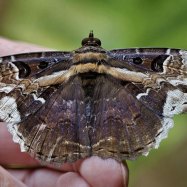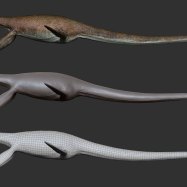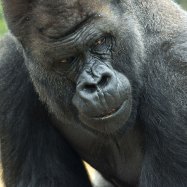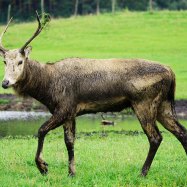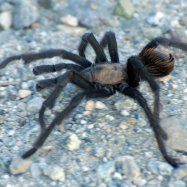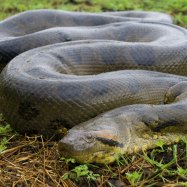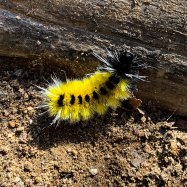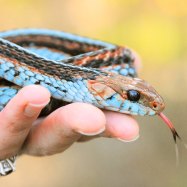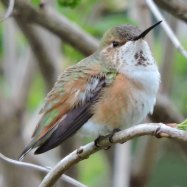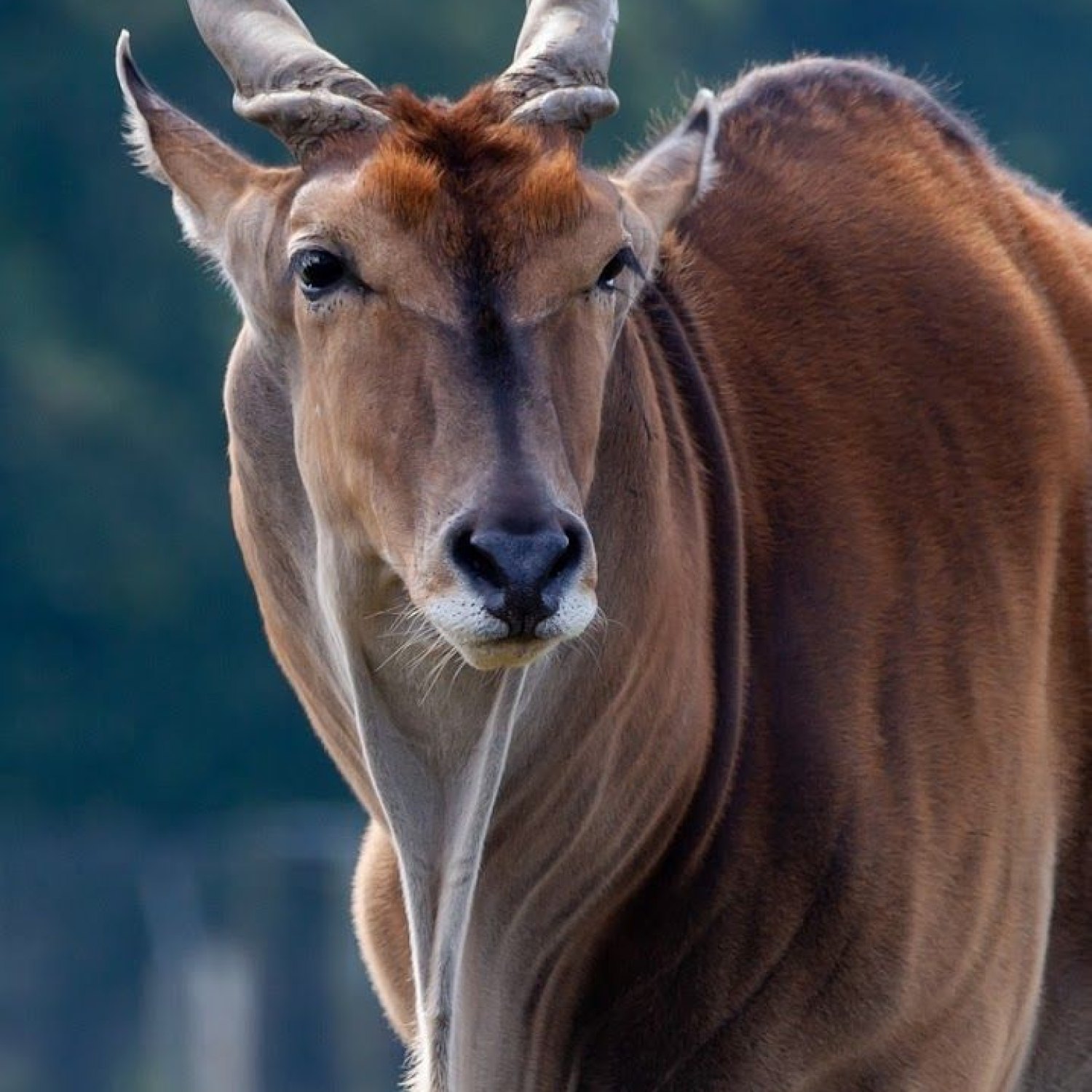
Eland
2.2-3.5 meters (7.2-11.5 feet)
Eland are magnificent antelopes found in Sub-Saharan Africa. With a large, stocky body shape and a length of 2.2-3.5 meters, they are the second largest antelope species. They are part of the Bovidae family and are known for their distinctive spiral horns. Eland are herbivores and can travel long distances in search of food. They are also known for their athletic ability, capable of jumping up to 2.5 meters in height. Next time you go on a safari, keep an eye out for these majestic animals! #Eland #Safari #SubSaharanAfrica
Animal Details Summary:
Common Name: Eland
Kingdom: Animalia
Habitat: Grasslands, savannahs, woodlands
The Majestic Eland: Africa's Largest Antelope
If you ever find yourself on a safari in Africa, chances are you will come across the mighty eland. With its striking appearance and impressive size, this antelope is not easily overlooked. But what makes the eland so special? Let's dive into the world of this magnificent animal and learn more about its unique features, behavior, and habitat.The Basics
The eland, also known as Taurotragus oryx, belongs to the Kingdom Animalia and the Phylum Chordata Eland. It is classified as a mammal in the class Artiodactyla, which includes animals with even-toed hooves. The eland is a member of the Bovidae family, which also includes other antelopes, goats, sheep, and cattle.This impressive animal can be found in various regions of Africa, including Ethiopia, South Sudan, Tanzania, Namibia, and Angola. It is mainly found in grasslands, savannahs, and woodlands, making it a versatile species that can adapt to different environments.
Appearance
The eland is the largest and slowest antelope in Africa, with a body shape that is stocky and robust. On average, it measures between 2.2 and 3.5 meters (7.2-11 Emperor Penguin.5 feet) in length and can weigh anywhere from 400 to 1,000 kilograms (880-2,200 pounds).One of the most distinctive features of the eland is its coloration. It is usually a tawny or light brown color, with a darker hue on its face, neck, and legs. The eland also has a white belly and cheeks, and its most recognizable feature - vertical white stripes that run down its body. These stripes serve as a camouflage mechanism, helping the eland blend in with its surroundings.
Feeding and Behavior
The eland is a herbivore, meaning it only eats plants. It is primarily a grazer, feeding on a variety of grasses, leaves, and shrubs. This adaptable diet allows the eland to thrive in different habitats and makes it less dependent on a specific food source.Another fascinating aspect of the eland is its eating patterns. It has the unique ability to store water in its stomach, allowing it to go for days without drinking. This is especially helpful during dry seasons when water sources may be scarce.
The eland is a social animal that lives in groups of up to 500 animals. These herds are hierarchically structured, with a dominant male leading the group. During the mating season, males will compete for the attention of females by displaying their impressive sizes and horns. The eland's horns are long and spiraled, measuring up to 1 meter (3 feet) in length.
One of the most intriguing behaviors of the eland is its "funeral" ritual. When an eland dies, the herd will gather around the body, bellowing mournfully. This behavior has been observed in several species of antelopes and may serve as a way to mourn the loss of a member of the herd.
Habitat and Conservation
The eland's geographical distribution in Africa makes it an essential part of the ecosystem. By feeding on grasses and shrubs, the eland helps to control plant growth and maintain the balance of the ecosystem. Additionally, the eland's droppings serve as fertilizer, contributing to the growth of new plants.Like many animals in Africa, the eland faces threats such as habitat loss and poaching. However, due to its adaptable nature, the eland is still widespread and not considered endangered. Organizations such as the African Wildlife Foundation work to protect and conserve the habitats of the eland and other animals in Africa.
The Eland and Humans
Throughout history, the eland has played a significant role in the livelihoods of African communities. Its meat and milk are sought after as a source of food and nutrition, and its hide and horns are used to make tools and jewelry.In some African cultures, the eland holds spiritual significance and is seen as a symbol of strength, vitality, and abundance. The San people of the Kalahari Desert even have a dance imitating the jumping movements of the eland, which is believed to bring good luck and ensure a successful hunt.
In recent years, the eland has also gained popularity among trophy hunters, leading to concerns about the impact on the species' population. As such, it is crucial for hunting to be regulated and monitored carefully to ensure the conservation of the eland and other animals.
The Eland in the World of NLP
While the eland is a stunning animal with many remarkable features, its inclusion in the world of Natural Language Processing is just as impressive. With its vast geographical distribution and the wealth of information available about its behavior and habits, the eland can provide valuable insights for NLP research.For instance, by analyzing data on the eland's behavior and communication patterns, NLP researchers could gain a better understanding of animal language, which could then be applied to study human communication. Additionally, studying the eland's ability to adapt to different habitats could provide valuable insights into the development of machine learning algorithms that can adapt to different environments.
The eland's involvement in NLP research may still be in its early stages, but its potential is far-reaching and exciting.
Wrap Up
The eland is a majestic animal that holds a special place in the ecosystems and traditions of Africa. With its impressive size, striking appearance, and fascinating behaviors, it is a true symbol of the continent's wild beauty.As we continue to learn more about this incredible animal through research and conservation efforts, we can ensure that the eland and other African species thrive for generations to come. So the next time you come across the mighty eland in the African savannah, take a moment to appreciate its beauty, strength, and vital role in the ecosystem.

Eland
Animal Details Eland - Scientific Name: Taurotragus oryx
- Category: Animals E
- Scientific Name: Taurotragus oryx
- Common Name: Eland
- Kingdom: Animalia
- Phylum: Chordata
- Class: Mammalia
- Order: Artiodactyla
- Family: Bovidae
- Habitat: Grasslands, savannahs, woodlands
- Feeding Method: Herbivore (mainly grazer)
- Geographical Distribution: Africa
- Country of Origin: Multiple countries in Africa
- Location: Sub-Saharan Africa
- Animal Coloration: Tawny, with vertical white stripes on the body
- Body Shape: Large, stocky
- Length: 2.2-3.5 meters (7.2-11.5 feet)

Eland
- Adult Size: Shoulder height: 1.5-1.9 meters (4.9-6.2 feet), Weight: 400-1,000 kg (880-2,200 lbs)
- Average Lifespan: Up to 20 years
- Reproduction: Sexual
- Reproductive Behavior: Polygynous (males mate with multiple females)
- Sound or Call: Loud roaring or bellowing sounds
- Migration Pattern: No regular long-distance migrations
- Social Groups: Mixed-sex herds
- Behavior: Diurnal (active during the day), social
- Threats: Habitat loss, hunting (for meat, skins, and trophies)
- Conservation Status: Least Concern
- Impact on Ecosystem: Key grazer and ecosystem engineer
- Human Use: Hunting, livestock farming
- Distinctive Features: Large, spiral horns in both sexes
- Interesting Facts: The Eland is the largest antelope species; it can jump high fences and is known for its endurance.
- Predator: Lions, hyenas, crocodiles
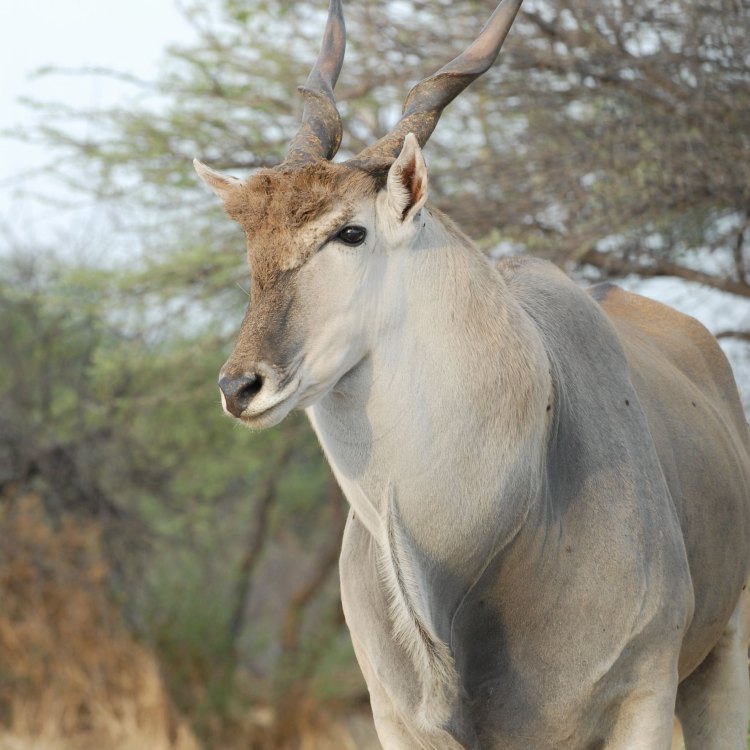
Taurotragus oryx
The Mighty Eland: A Fascinating Giant of the Antelope World
When we think of African wildlife, majestic animals like lions, elephants, and giraffes often come to mind. However, there is one species that often goes unnoticed, yet is equally as impressive – the Eland. This remarkable antelope, with its distinctive features and unique behaviors, is a true wonder of nature.The Eland (Taurotragus oryx) is the largest antelope species in the world PeaceOfAnimals.Com. It can be found in the savannas and woodlands of sub-Saharan Africa, from Senegal to South Africa. While it may not be as well known as other African animals, the Eland has many interesting characteristics and plays a crucial role in its ecosystem.
Majestic Size and Weight
Elands are truly giant animals, with males reaching shoulder heights of 1.5-1.9 meters (4.9-6.2 feet) and weighing between 400-1,000 kg (880-2,200 lbs). Females are slightly smaller, making them the largest antelope species in terms of both size and weight. These massive animals are built for endurance, with powerful legs and a stocky body that allows them to travel long distances in search of food and water Eurasian Bullfinch.A Long Life in the Wild
The average lifespan of an Eland in the wild is up to 20 years, making them one of the longest-lived antelope species. They are able to survive in harsh environments, thanks to their ability to store fat reserves and their strong immune system. However, their longevity is threatened by human impacts such as habitat loss and hunting.A Key Role in Reproduction
Elands are a sexually reproducing species, with males competing for the attention of females during mating season. They follow a polygynous mating system, where one male mates with multiple females. This can lead to fierce competition among males, with the dominant male defending his harem of females from other males.Majestic Sounds and Social Behavior
One of the most fascinating aspects of Eland behavior is their loud and distinct vocalizations. During mating season, males will emit loud roarings and bellowing sounds to attract females and intimidate other males. This can also be heard during any form of social interaction within the herd.Speaking of herds, Elands are social animals and are often found in mixed-sex herds of up to 25 individuals. These herds are led by a dominant female and her offspring, with males often joining the herd during mating season.
No Ordinary Creatures of the Day
The Eland is a diurnal species, meaning they are active during the day. They use this time to forage for food, which mainly consists of grasses, leaves, and bark. They are also capable of surviving for long periods without water, making them well adapted to survive in arid regions.While they may seem like peaceful animals, Elands also have a unique behavior known as 'pronking'. This is when they jump up and down with all four feet off the ground, similar to how a gazelle or springbok would jump. The reason for this behavior is still unknown, but it is believed to be a form of communication between herd members.
Threats to Survival
Despite being one of the largest and most resilient antelopes, Elands face numerous threats in the wild. Habitat loss, caused by human activities such as agriculture and urbanization, is a major threat, as it reduces their food and water sources. Additionally, Elands are often hunted for their meat, skins, and horns, both for subsistence and as trophies.Conservation Status and Ecological Impact
Currently, the Eland is listed as least concern on the IUCN Red List of Threatened Species. However, their populations are declining due to the threats mentioned above, and conservation efforts are necessary to ensure their survival.One of the key reasons for conserving Elands is their crucial role in their ecosystem. As grazers, they play an important role in shaping the structure and composition of vegetation in their habitat. Their large size and selective feeding habits make them important ecosystem engineers, helping to maintain a balance between different plant species. This, in turn, benefits other animals that rely on these plants for food and shelter.
Human Use and Endurance
Elands have also been an important resource for humans for thousands of years. In many African countries, they are still hunted for their meat, which is lean and highly nutritious. Their skins and horns are also used for traditional purposes, and their dung is a valuable source of fertilizer.Despite being hunted, Elands have an incredible endurance that has made them the stuff of legend. They are known for their ability to jump high fences and cover great distances without tiring. In fact, according to Maasai folklore, Elands were once believed to be able to outrun and exhaust even the fastest lion.
Distinctive Features and Fascinating Facts
Elands are easily recognizable by their spiral horns, which are present in both males and females. These impressive horns can grow up to 1 meter (3.3 feet) in length and are used mainly for defense against predators and during mating displays.Apart from their size and strength, Elands also have a few other interesting features and behaviors. They are one of the few antelope species that have adapted to living in both open savannas and dense woodlands. They also have a unique digestive system that allows them to break down and extract nutrients from tough plant material.
One fascinating fact about Elands is that they are excellent swimmers and can often be found crossing rivers and even swimming through water bodies in search of food and water. They are also known to have a symbiotic relationship with some bird species, where birds will ride on their backs and pick off parasites, providing a mutual benefit for both parties.
Predators and Conclusion
Despite their impressive size and unique features, Elands are not without predators. Lions, hyenas, and crocodiles are all known to prey on these giant antelopes, especially young calves. However, their endurance and social behavior often help them to avoid becoming a meal.In conclusion, the Eland is truly a remarkable species that deserves more recognition. Their size, strength, and unique behaviors make them a fascinating subject of study for researchers and a symbol of resilience in the face of threats. As we continue to learn more about these magnificent animals, let us also work towards protecting them and ensuring their survival for many years to come.
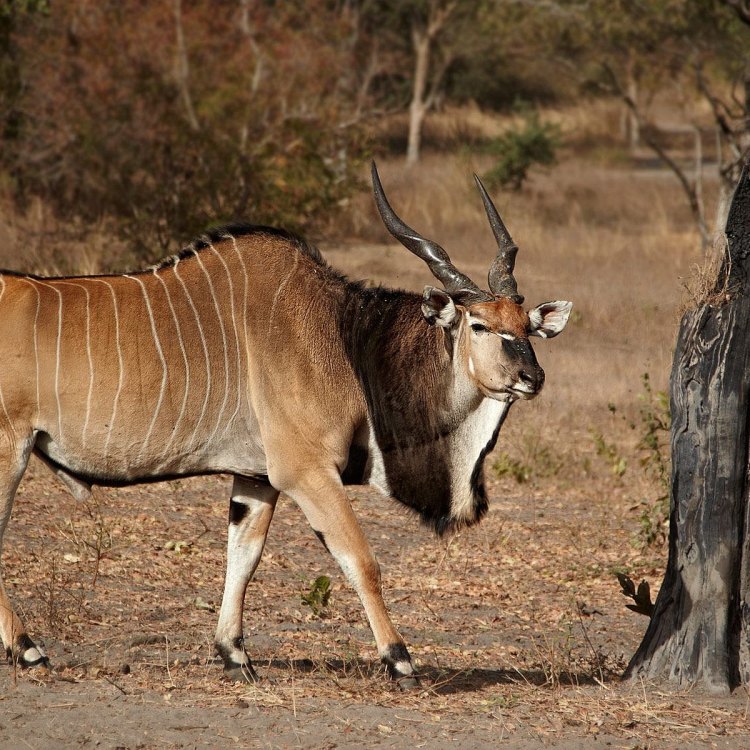
The Majestic Eland: Africa's Largest Antelope
Disclaimer: The content provided is for informational purposes only. We cannot guarantee the accuracy of the information on this page 100%. All information provided here may change without prior notice.

